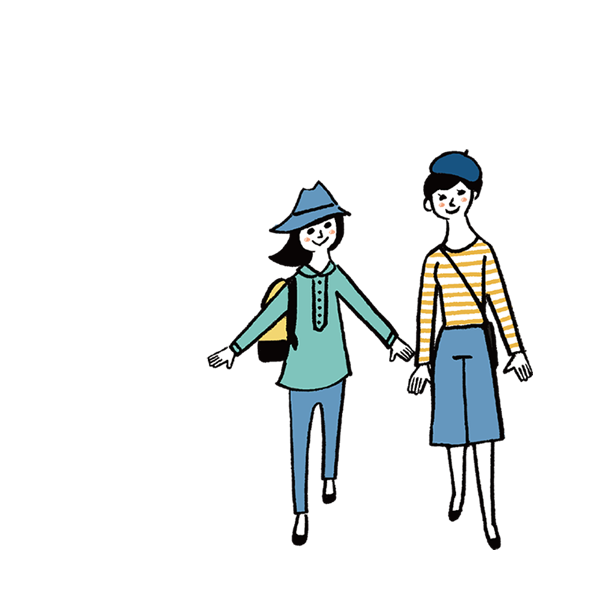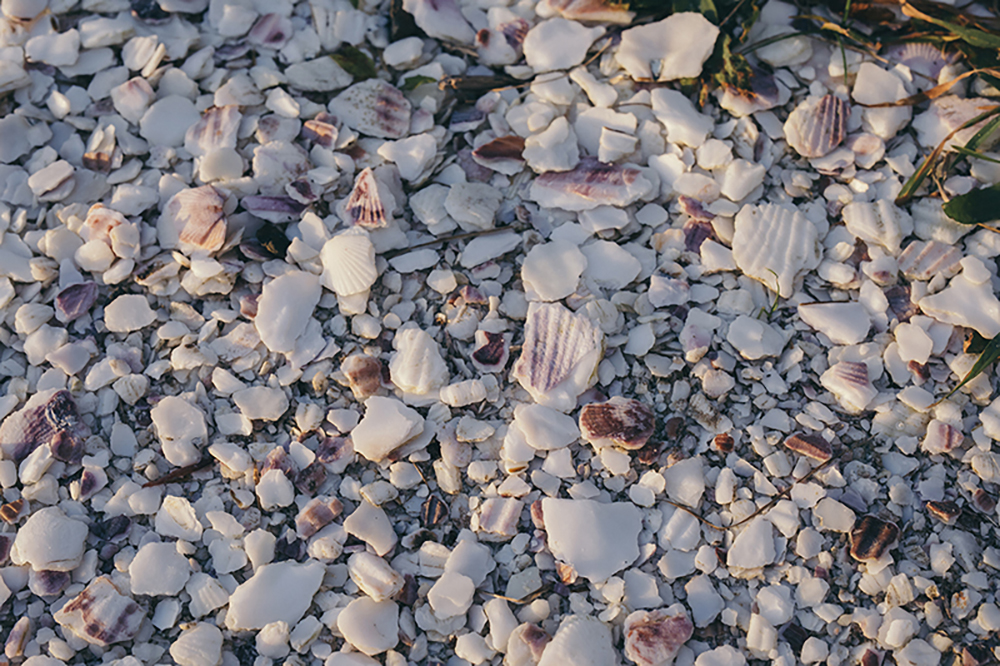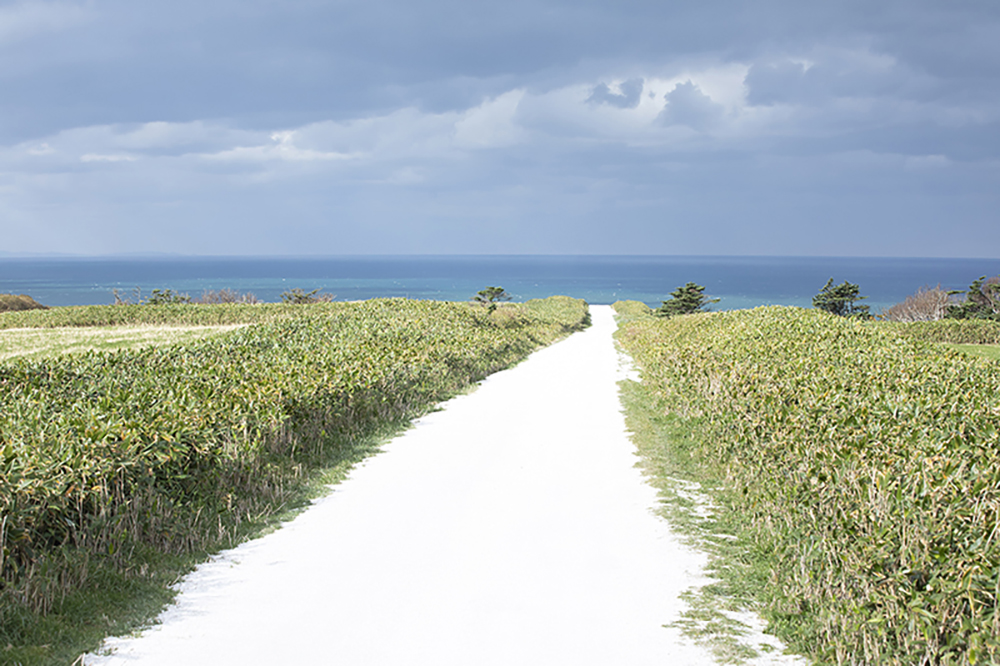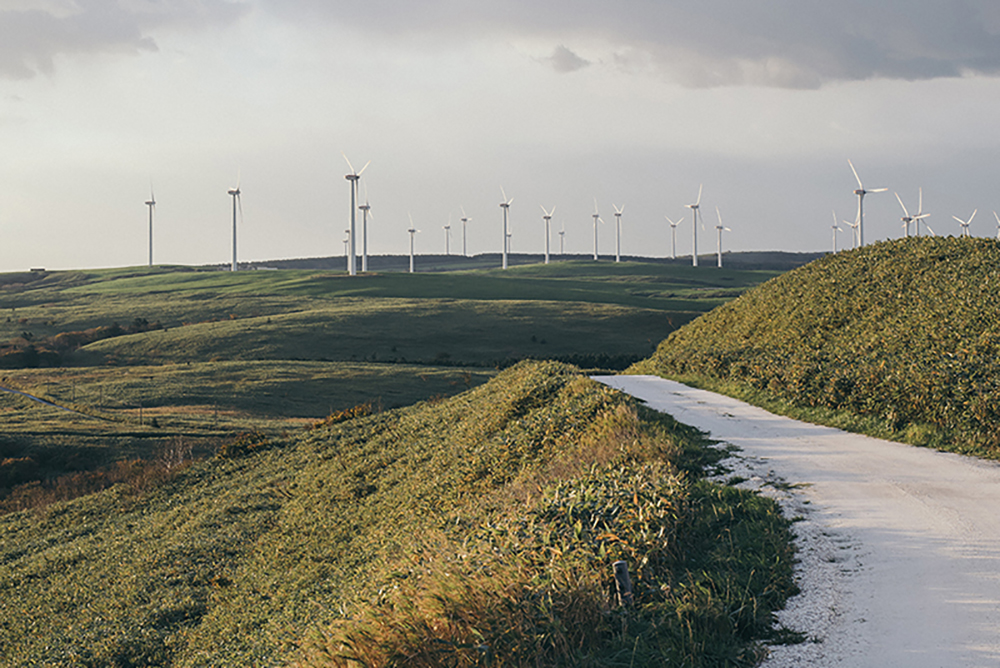Take a stroll along the White Path paved with scallop shells

Stretching for approximately 3 km towards the end of the Soya Hills Footpath Course is the "white path".
This path is actually paved with crushed scallop shells.
Born from an idea of City officials and other tourism-related personnel in 2011,
the "white path" gives visitors the impression of being not in Japan but in a foreign country,
and has become a popular photogenic spot.
Scallop shells, which were industrial waste

Wakkanai is Japan’s northernmost city.
Surrounded by two seas – with the Sea of Japan to the west and the Okhotsk Sea to the east – the city boasts an abundance of fisheries resources,
including Rishiri kombu (kelp) and Atka mackerel.
Among these resources is one of the designated Wakkanai brands,
Soya Scallops – a typical seafood delicacy of the city loved by locals as well as domestic and overseas tourists, too.
Although quite small, Soya Scallops have characteristically firm flesh into which savory and sweet tastes are condensed.
However, the shells of those scallops had no use and were disposed of as waste.
From the viewpoint of environmental conservation,
considerations were made as to how they could be re-used and,
as a result of trial and error, the “white path” was born from the idea of crushing the shells and spreading them on the path.
Wakkanai is Japan’s northernmost city. Surrounded by two seas – with the Sea of Japan to the west and the Okhotsk Sea to the east – the city boasts an abundance of fisheries resources,
including Rishiri kombu (kelp) and Atka mackerel. Among these resources is one of the designated Wakkanai brands, Soya Scallops – a typical seafood delicacy of the city loved by locals as well as domestic and overseas tourists, too. Although quite small, Soya Scallops have characteristically firm flesh into which savory and sweet tastes are condensed. However, the shells of those scallops had no use and were disposed of as waste. From the viewpoint of environmental conservation, considerations were made as to how they could be re-used and, as a result of trial and error, the “white path” was born from the idea of crushing the shells and spreading them on the path.
Magnificent scenery in which a tricolor of blues, greens and whites overlap.

The photogenicity of the contrast of the blue skies and seas, the green pastures and the pure white path became popular via social media sites,
and is increasing introduced on TV in recent years.
The white path, located on the Soya Hills – one of Wakkanai’s scenic spots – boasts many highlights along its route,
including the sight of the 57 windmills of the Cape Soya Wind Farm and, on clear days, views of Rishirifuji and the silhouette of the island of Sakhalin.
As well as enjoying a leisurely walk, it is also possible to drive cars and ride bikes along the path (the path is narrow;
please be cautious when passing pedestrians or oncoming vehicles) to enjoy the passing scenery.
The photogenicity of the contrast of the blue skies and seas, the green pastures and the pure white path became popular via social media sites, and is increasing introduced on TV in recent years. The white path, located on the Soya Hills – one of Wakkanai’s scenic spots – boasts many highlights along its route, including the sight of the 57 windmills of the Cape Soya Wind Farm and, on clear days, views of Rishirifuji and the silhouette of the island of Sakhalin. As well as enjoying a leisurely walk, it is also possible to drive cars and ride bikes along the path (the path is narrow; please be cautious when passing pedestrians or oncoming vehicles) to enjoy the passing scenery.
Improving both the environment and tourism

Not only is it beautiful but by not disposing of the shells as waste, it is possible to reduce adverse effects on the environment. Also, since the change from a gravel to a shell surface,
the path has become softer under foot, increasing its appeal as a footpath,
and the salt contained within the shells is said to have helped suppress the reproduction of weeds.
Instead of just being thrown away, the shells have – from an innovative idea and a sustainable perspective – been re-born as an environmentally friendly and scenic “white path”.
Why not come and see this fantastic scenery for yourself.
Not only is it beautiful but by not disposing of the shells as waste, it is possible to reduce adverse effects on the environment. Also, since the change from a gravel to a shell surface, the path has become softer under foot, increasing its appeal as a footpath, and the salt contained within the shells is said to have helped suppress the reproduction of weeds. Instead of just being thrown away, the shells have – from an innovative idea and a sustainable perspective – been re-born as an environmentally friendly and scenic “white path”. Why not come and see this fantastic scenery for yourself.
*Closed from around November to early May.
- The Northernmost White Path
-
- Approx. 1 hour by car from JR Wakkanai Station.
- Approx. 5-min. walk from the "Soya" bus stop, which is approx.
40 min. by bus (Tempoku–Soya Misaki route) from JR Wakkanai Sta. - Approx. 20 min. by car from Wakkanai Airport.
- Approx. 10 min. by car from Cape Soya.